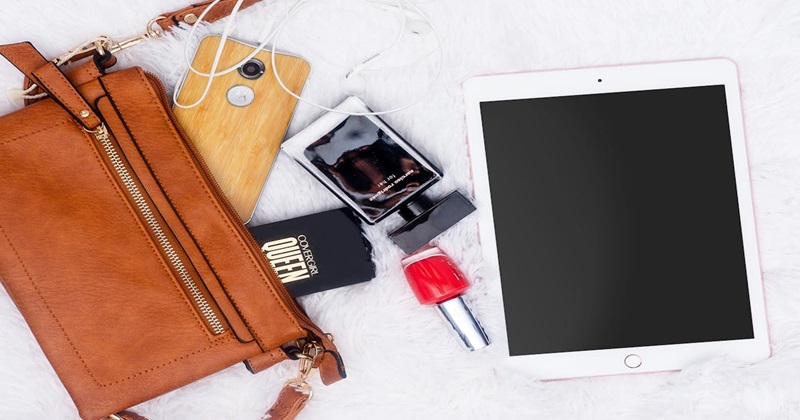
For centuries, authentic gold jewelry has represented wealth, status, and beauty. Gold is often considered a wise investment, whether a cherished family heirloom or a recent purchase. With the increasing presence of counterfeit gold in the market, it is crucial to confirm the authenticity of your jewelry. Purchasing fake gold can result in considerable financial loss and emotional disappointment. Luckily, there are several ways—both at home and with a professional jeweler—to determine if your gold jewelry is the real deal. Let’s explore these methods in detail, including essential tests to spot authentic gold jewelry, so you can rest assured that your precious gold is genuine.
Understanding Gold Purity
Before diving into tests, it’s crucial to understand how gold purity is measured. Gold is often mixed with other metals to ensure durability for daily use, as pure gold is too soft to maintain its shape. Gold purity is indicated in karats (K), and understanding the karat of your jewelry is essential for evaluating its value and authenticity.
24K Gold
- Composition: 100% pure gold.
- Characteristics: It is soft and malleable. It is not suitable for daily wear as it bends and scratches easily. Pure gold has a distinct, rich yellow hue.
- Use: Rarely used for making jewelry designed for everyday wear and often seen in collectible coins, bars, or traditional ceremonial pieces.
22K Gold
- Composition: It has 91.67% gold, with 8.33% other metals like copper or silver.
- Characteristics: It is more durable than 24K gold but still relatively soft. It retains a rich yellow color but is more suitable for intricate designs and traditional jewelry.
- Use: Common in Asian and Middle Eastern jewelry due to its luxurious appearance and significant gold content.
18K Gold 
- Composition: It contains 75% gold, while 25% includes other alloys like copper, silver, or palladium.
- Characteristics: A perfect balance between purity and durability. It is more robust and less prone to scratching than higher-purity gold but retains an excellent yellow hue.
- Use: Popular in fine jewelry like engagement rings, earrings, and necklaces. Its higher purity also makes it more hypoallergenic.
14K Gold
- Composition: It has 58.3% gold, with 41.7% other metals.
- Characteristics: It is affordable and durable. The higher percentage of other metals makes 14K gold more resistant to scratches and dents. It has a slightly paler yellow color than 18K or 22K gold.
- Use: Ideal for daily-wear items like rings, bracelets, and watches. They are frequently used in mass-produced jewelry due to their affordability and durability.
10K Gold
- Composition: 41.7% gold, with a large proportion of other metals.
- Characteristics: This gold type is the most expensive and durable form of gold used in jewelry. However, it has a paler yellow appearance and may cause skin reactions for those with metal allergies due to the higher alloy content.
- Use: Used in more affordable or heavily used jewelry items like men’s rings or chains.
Each of these karat levels will often have a corresponding hallmark or stamp on the jewelry (such as “24K” or “750” for 18K gold). However, hallmarks can be faked, combining this visual inspection with the more definitive vitals test.
At-Home Tests to Spot Authentic Gold Jewelry
When you want to check your gold jewelry’s authenticity but wait to go to a professional, you can perform several simple tests at home. These methods give you a quick idea of whether your piece is absolute gold.
1. Water Test: Checking Gold’s Density
Gold is a dense metal, and a water test is one of the simplest ways to check its authenticity. This method works because gold is thicker than most metals, causing it to sink when placed in water. On the other hand, fake gold (often made from lighter metals) may float or sink slowly.
How to Perform the Water Test
- Fill a container with water. Use a bowl or glass large enough to submerge the jewelry fully.
- Gently place your gold jewelry into the water.
- Observe the behavior of the jewelry.
Interpretation
- If the gold sinks directly to the bottom: This is a good sign that your gold is authentic, as its density allows it to sink quickly.
- If the gold floats or hovers: This suggests that your jewelry may be counterfeit or made with lighter metals.
While this test is simple, it could be more foolproof. Some fake pieces may still sink due to being made with dense, non-gold materials. Thus, it’s best used alongside other tests.
2. Magnet Test: Real Gold Is Non-Magnetic
Another easy test to perform at home is the magnet test. Pure gold and most gold alloys (18K or 22K) are non-magnetic. So, if your gold is attracted to a magnet, it’s likely made of other magnetic metals, like nickel or iron.
How to Perform the Magnet Test
- Use a powerful magnet, like a neodymium magnet. These are available online or at hardware stores.
- Hold the magnet near your jewelry.
- See if the jewelry is attracted to the magnet.
Interpretation
- No magnetic attraction: This suggests your gold is accurate, as gold is not magnetic.
- The magnet attracts the jewelry: This could mean the piece is counterfeit or gold-plated with a magnetic core (like steel).
Be aware that some fake gold items may not respond to a magnet, mainly if they are made from non-magnetic metals. Again, this test is most effective when combined with other methods.
3. Acid Test: The Chemical Reaction
The acid test is one of the most reliable ways to check whether your gold jewelry is genuine. You can observe the metal’s reaction by applying nitric acid to a tiny scratch on its surface. Gold resists nitric acid, while other metals typically show a noticeable response.
How to Perform the Acid Test
- Purchase a gold testing kit with nitric acid (online or through jewelry supply stores).
- Make a tiny scratch on an inconspicuous part of your jewelry to expose the underlying metal.
- Utilize a dropper to place nitric acid on the scratched section.
- Observe the reaction.
Interpretation
- No reaction: Real gold will remain unaffected by the acid, showing no visible change.
- Green reaction or fizzing: This indicates the presence of base metals, meaning the jewelry is likely fake or only gold-plated.
Keep in mind that this test can cause damage to the surface of the jewelry, mainly if the piece is gold-plated. Therefore, it’s best to use the acid test sparingly and only on pieces where you don’t mind a small scratch.
4. Ceramic Scratch Test: Revealing the True Color
The ceramic scratch test can be used to check the color of the metal beneath the surface of your jewelry. Gold has a unique color that other metals can’t fully replicate. In this test, you will rub your gold against an unglazed ceramic surface to see what color streak it leaves behind.
How to Perform the Ceramic Scratch Test
- Find an unglazed ceramic plate or tile.
- Gently rub your gold jewelry against the surface of the ceramic.
- Look at the streak left behind.
Interpretation
- Gold streak: If the jewelry leaves a gold-colored streak, it is likely real gold.
- Black or gray streak: This indicates that the jewelry is made of another metal or is simply gold-plated.
This test is non-destructive and quick but may leave a mark on the ceramic piece.
5. Visual Inspection: Examine Your Gold Jewelry Closely
One of the most effective (and least invasive) ways to check if your gold is real is to give it a close visual inspection. Look for any telltale signs of wear, discoloration, or inconsistent coloring, as fake gold or gold-plated pieces may begin to show different metals underneath over time.
How to Perform a Visual Inspection
- Look for hallmarks: Authentic gold jewelry often has a hallmark indicating the karat value, such as 10K, 14K, 18K, or 24K. You might also see international markings like “750” for 18K gold or “585” for 14K gold.
- Check for discoloration: Inspect the edges and places where the jewelry is most worn (such as clasps, band interiors, and edges). If you notice a different metal peeking through, it could be gold-plated instead of solid gold.
- Evaluate the craftsmanship: High-quality gold jewelry is usually well-made with clean edges and no rough spots. Sloppy soldering, rough edges, or inconsistent seams suggest a lower-quality, fake piece.
Interpretation
- Clear, consistent markings and smooth craftsmanship indicate your jewelry is likely authentic.
- Discoloration, faded areas, or inconsistent markings indicate that your piece may be counterfeit or only gold-plated.
Professional Jeweler Verification
While home tests can provide some insight, there’s no substitute for evaluating your jewelry by a professional jeweler or gemologist. These experts use advanced tools and methods to give you a definitive answer on the authenticity of your gold.
Professional Acid Test
Jewelers often use more vital acids in conjunction with testing stones to verify the authenticity of gold. They may test the gold at different points to ensure the piece is solid rather than just being plated. The jeweler will apply the acid to a small scratch on the jewelry and observe any reactions. This careful approach helps prevent damage to your piece while providing reliable results.
Density Test
Since gold is heavier than most metals, jewelers can perform a density test. It involves weighing the gold and dividing its mass by its volume. The piece is likely authentic if the calculated density matches gold’s known density. This method is beneficial for distinguishing between various karat levels, as different gold alloys have different densities.
Spectroscopic Analysis
The most advanced method is spectroscopic analysis, where a jeweler uses specialized machines (like X-ray fluorescence or XRF analyzers) to determine the exact metal composition of your jewelry. This technique is precise and non-invasive, making it one of the most effective ways to confirm authenticity. Spectroscopic analysis can detect the gold content and any trace metals that might be in the piece. This thorough evaluation offers a complete insight into your jewelry’s composition, ensuring you have confidence in its authenticity.
Conclusion
In today’s market, where counterfeit gold is increasingly prevalent, verifying your gold jewelry’s authenticity is essential. By understanding the purity of gold and using home tests like the water, magnet, acid, and ceramic scratch tests, you can make informed decisions about your jewelry’s authenticity. However, consulting a professional jeweler is the best route for a definitive answer. Protect your investment and ensure that your gold remains a timeless treasure.







